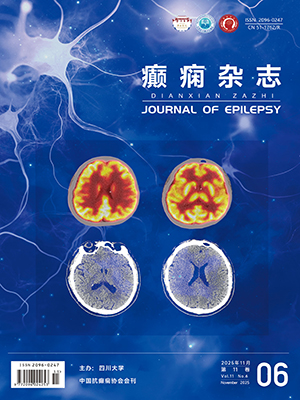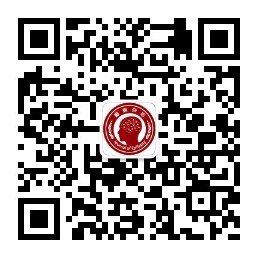| 1. |
沈曉明, 王衛平主編. 兒科學. 第七版. 北京: 人民衛生出版社, 2010: 390.
|
| 2. |
王華. 兒童癲癇共患頭痛. 中國實用兒科雜志, 2017, 32(04): 256-262.
|
| 3. |
常琳, 王小姍. 中國癲癇流行病學調查研究進展. 國際神經病學神經外科學雜志, 2012, 39(2): 161-164.
|
| 4. |
劉璐, 袁珍, 朱剛. 兒童癲癇共患精神障礙研究進展. 中國實用兒科雜志, 2017, 32(4): 269-272.
|
| 5. |
Rosati A, De Masi S, Guerrini R. Antiepileptic drug treatment in children with epilepsy. CNS Drugs, 2015, 29(10): 847-863.
|
| 6. |
Dang LT, Silverstein FS. Drug treatment of seizures and epilepsy in newborns and children. Pediatr Clin North Am, 2017, 64(6): 1291-1308.
|
| 7. |
王衛平主編. 兒科學第八版. 北京: 人民衛生出版社, 2013: 392.
|
| 8. |
吳冬燕. 癲癇患者生活質量的研究. 復旦大學碩士學位論文, 2006: 1-69.
|
| 9. |
尹妙芬, 易玉娟, 鄭小霞. 個性化延續護理在兒童癲癇中的應用探討. 哈爾濱醫學院學報, 2015, 36(33): 5116-5117.
|
| 10. |
顏文, 王淑瓊, 薛琴, 等. 應用 Morisky 服藥依從性量表調查中存在的問題對策. 護理研究, 2015, 29(7): 890-891.
|
| 11. |
王英杰. 針對兒童癲癇患者以家庭為中心教育干預效果的研究. 北京協和醫學院碩士學位論文, 2013: 9-85.
|
| 12. |
夏泳, 姜敏. 癲癇患兒家長對癲癇的認知狀況調查及健康宣教對策研究. 醫藥雜志, 2017, 46(2): 151-154.
|
| 13. |
Morisky DE, Yan J, You LM, et al. Translation and validation of a Chinese version of the 8-item Morisky medication adherence scale in myocardial infarction patients. J Eval Clin Pract, 2014, 20(4): 311-317.
|
| 14. |
段曉玲. 兒童生活質量普通適用核心量表 4.0 中文版在癲癇兒童的信度效度分析. 重慶醫科大學碩士學位論文, 2011: 1-31.
|
| 15. |
方映玲, 王璐, 郭彤, 等. 運用知信行模式對哮喘患兒家庭進行健康教育的效果. 解放軍護理雜志, 2017, 34(11): 30-33.
|
| 16. |
李沁晏, 陳麗, 祝彩華. 臨床路徑的健康教育方式在兒童癲癇規范化治療中的應用. 全科護理, 2010, 8(5): 1214-1215.
|
| 17. |
汝驊. 學校健康教育" 知信行模式”理論與實踐. 北京: 中國輕工業出版社, 2011: 34.
|
| 18. |
高春紅, 梅克文, 胡曉琳. 知信行模式對老年高血壓患者自護能力及疾病認知水平的影響. 中華現代護理雜志, 2017, 14(3): 1867-1871.
|
| 19. |
Ghannadi S, Amouzegar A, Amiri P, et al. Evaluating the effect of knowledge, attitude, and practice on self-management in type 2 diabetic patients on dialysis. J Diabetes Res, 2016, 7: 3730875.
|
| 20. |
Almobarak AO, Elbadawi AA, Elmadhoun WM, et al. Knowledge attitudes and practices of sudanese women regarding the pap smear test and cervical. Asian Pac J Cancer Prev, 2016, 17(2): 625-630.
|
| 21. |
吳佼佼, 馬紅梅, 廖春霞, 等. 醫護一體化工作模式在護理領域中的應用現狀. 中國醫藥導報, 2017, 14(4): 38-42.
|
| 22. |
鄒玉梅, 劉紅梅, 馬福巧, 等. 網絡互動式健康教育對癲癇患兒服藥依從性的影響. 循證護理, 2018, 4(3): 258-260.
|
| 23. |
劉花艷, 谷利鳳, 朱麗輝, 等. 癲癇患兒家庭管理干預的效果研究. 中華護理雜志, 2017, 52(10): 1157-1162.
|
| 24. |
Goodwin SW, Wilk P. Emotional well-being in children with epilepsy: family factors as mediators and moderators. Epilepsia, 2017, 58(11): 1912-1919.
|
| 25. |
Kampra M, Tzerakis N. The challenges that parents of children with epilepsy face: a qualitative study. Epilepsy Behav, 2017, 71(Pt A): 94-103.
|
| 26. |
毛麗芳, 胡建萍, 謝燕, 等. 醫護一體化護理對食管癌患者情緒及生存質量的影響. 川北醫學院學報, 2019, 34(2): 306-308.
|
| 27. |
劉美麗, 朱麗輝. 健康教育" 知信行模式”在疾病預防保健及護理中的應用進展. 當代護士(下旬刊), 2019, 26(03): 9-12.
|
| 28. |
Bove DG, Jellington MO, Lavesen M, et al. Assigned nurses and a professional relationship: a qualitative study of COPD patients' perspective on a new palliative outpatient structure named CAPTAIN. BMC Palliative Care, 2019, 18(1): 24.
|
| 29. |
李興廣. 癲癇患兒命質量評價. 臨床兒科雜志, 2015, 33(11): 942-945.
|
| 30. |
Arya V, Gehlawat VK, Kaushik JS, et al. Assessment of parent reported quality of life in children with epilepsy from Northern India: a cross-sectional study. J Pediar Neurosci, 2014, 9(1): 17-20.
|
| 31. |
陳麗君. 淺談提高癲癇病治療依從性護理措施. 世界最新醫學信息摘要, 2016, 16(74): 207-208.
|
| 32. |
余祖琳. 健康教育路徑在提高癲癇患兒服藥依從性中的應用. 安徽衛生職業技術學院學報, 2016, 15(5): 70-71.
|
| 33. |
Ma C, Park SH, Shang J. Inter and intra-disciplinary collaboration and patient safety outcomes in U. S. acute care hospital units: a cross-sectional study. Int J Nurs Stud, 2018, 55(8): 1-6.
|




